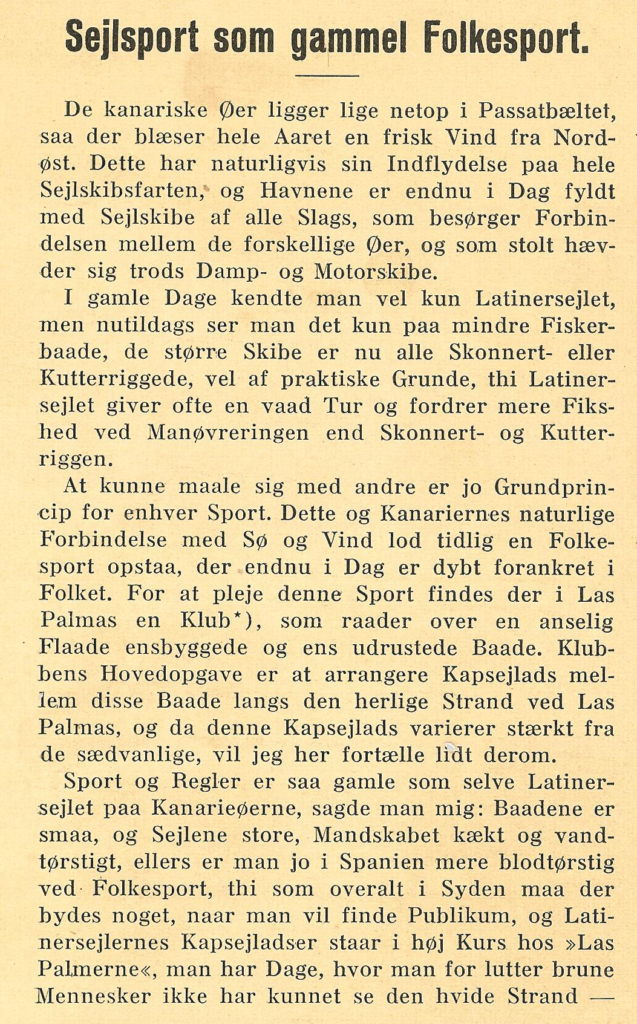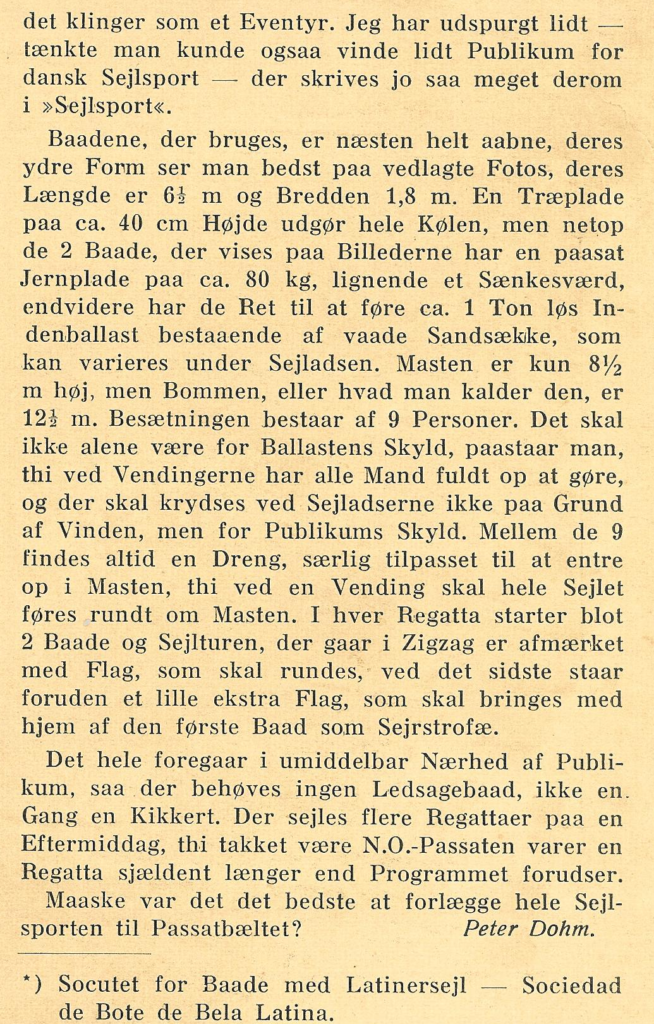Here is the pages of it and below is the translation of it.

Sailing as an old folk sport.
The Canary Islands lie precisely in the trade fair belt, so a fresh wind blows from the north-east all year round. This, of course, has its influence on the whole of sailing, and the harbors are still today full of sailing ships of all kinds, which provide the connection between the various islands, and which proudly assert themselves in spite of steam and motor ships.
In the old days you probably only knew the Latiner sail, but nowadays you only see it on smaller fishing boats, the larger ships are now all schooner or cutter rigged, probably for practical reasons, because the Latiner sail often gives a wet trip and requires more rigging -ness at the Maneuvering than the Schooner and Cutter rig. Being able to measure yourself against others is the basic principle of every sport. This and the Canaries’ natural connection with sea and wind allowed a folk sport to arise early on, which is still deeply rooted in the people today. To nurture this sport, there is a club in Las Papnas which has a considerable fleet of identically built and similarly equipped boats. The club’s main task is to organize races between these boats along the glorious beach at Las Palmas, and since this race differs greatly from the usual ones, I will tell you a little about it here. Sports and rules are as old as the Latin sailing itself on the Canary Islands, I was told: the boats are small, and the sails are large, the crew is handsome and water-thirsty, otherwise in Spain people are more bloodthirsty for folk sports, because as everywhere in the south they have to have something is on offer when you want to find an audience, and Latin sailors’ races are in high demand. at “Las Palmerne”, you have days when, for mere brown people, you have not been able to see the white beach it sounds like an adventure. I have asked a little, did you think you could also win a little audience for Danish Sailing, there is so much written about it in “Sailing”.
The boats that are used are almost completely open, their outer shape is best seen in the attached photos, their length is 6.5 m and the width 1.8 m. A wooden board of approx. 40 cm height makes up the entire keel, but the 2 boats shown in the pictures have an attached iron plate of approx. 80 kg, similar to a lowering sword, they also have the right to carry approx. 1 ton of loose internal ballast consisting of wet sandbags, which can be varied during the voyage. The mast is only 8.5 m high, but the boom, or whatever you call it, is 12 m. The crew consists of 9 people. It must not only be because of the ballast, one insists, because at the turnings everyone has a lot to do, and there must be crossings during the sailings not because of the wind, but because of the public. Between the 9 there is always a boy, specially adapted to go up the mast, because during a turn the whole sail must be brought around the mast. In each Regatta, only 2 boats start and the sailing trip, which goes in zigzag, is marked with flags, which must be rounded, at the last stand, in addition to a small extra flag, which must be brought home by the first boat as a victory trophy. It all takes place in the immediate vicinity of the audience, so no accompanying boat is needed, not even binoculars. Several regattas are sailed in one afternoon, because thanks to the N.O. trade wind, a regatta rarely lasts longer than the program predicts. Perhaps it was best to relocate the entire sailing sport to the Passat belt?
Peter Dohm.
*) Socutet for Boats with Latin sails Sociedad de Bote de Bela Latina.
